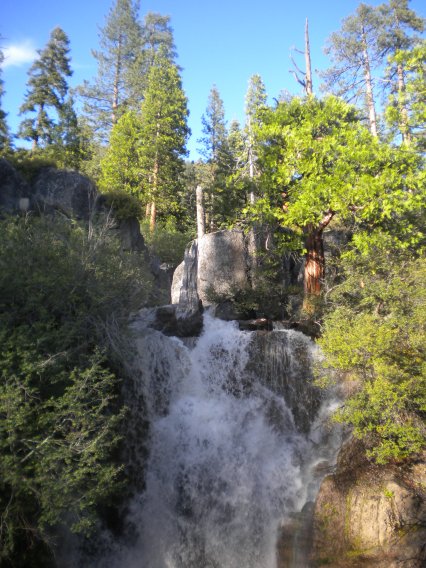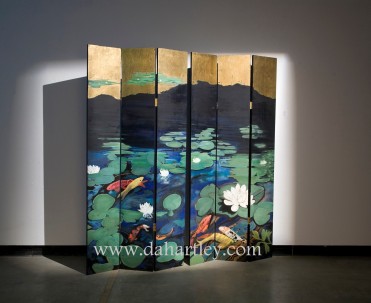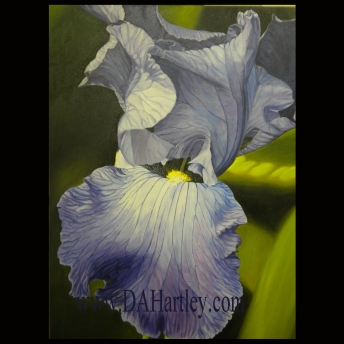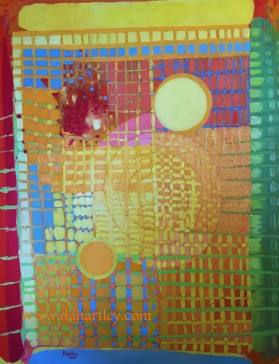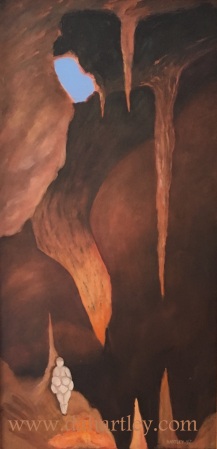In this series, World of Abstraction, my paintings are based upon philosophical ideas, and addressing the unknown. Paintings by Denise Hartley.
“Passage Way”. The opening into another dimension. How do we reach the unknown within ourselves? How do we learn about ourselves?
To Know Yourself is to Forget Yourself
So to know yourself is to forget yourself. This is to say that when we make friends with ourselves we no longer have to be so self-involved. It’s a curious twist: making friends with ourselves is a way of not being so self-involved anymore. Then Dogen Zen-ji goes on to say, “To forget yourself is to become enlightened by all things.” When we are not so self-involved, we begin to realize that the world is speaking to us all of the time. Every plant, every tree, every animal, every person, every car, every airplane is speaking to us, teaching us, awakening us. It’s a wonderful world, but we often miss it. It’s as if we see the previews of coming attractions and never get to the main feature.

“Mitochondria I, Mitochondria II”, mixed media on wood, gold leaf, 4’ x 6’, 2002. Private collections.
“Mitochondria”. Each of our cells can contain thousands of mitochondria. They are used by our bodies to convert molecules into energy. They are independent, and genetically distinct from the cell nucleus, and can manufacture their own proteins. It is thought that mitochondria originated as a separate single-cell organism that became symbiotic with their hosts, as to be indispensable. Mitochondrial DNA is a remnant of a past existence as a separate organism. Mitochondria contain their own DNA, which we only inherit from our mothers, and can be used to trace maternal links (The American Heritage Science Dictionary).
“Jade Disc”. This disc is called a bi disc, it is a flat jade disc, with a circular hole in the center. They were used in Neolithic times, burial objects, undecorated, about 3000 B.C.E. The jade objects represent Heaven and were laid on the diseased.
“Tao”. This painting represents the beginning of the universe. The red rays piercing the disc, are the sparks that create the Ten Thousand Things in our existence.
Lao Tzu, The Tao Te Ching
Verse 40.

Returning (to the basis) is the motion of Tao,
Yielding is the work of Tao,
The Ten Thousand Things in the universe are born of being,
Being is born of nothingness.
Verse 42.
Tao begot one.
One begot two.
Two begot three.
And three begot the Ten Thousand Things.
“Silent Passage”.
The reason water can keep changing its form is because it is essentially formless. Its form is determined by what is around it. Put it in a cup, and it will be cup-shaped. Put it in a ravine, and it will be river-shaped. It needs no form of its own, because it harmonizes with everything around it, taking other beings as its outline, instead of imposing itself upon others”.
Lao Tzu, The Tao Te Ching.
“Zen Drawing”. Enlightenment, the first principle is possible acknowledging the everything and everyone is Buddha-nature. Enlightenment is possible to everyone. Enlightenment in Buddhism, or for the Taoist sage, is not expressible in words, or logical thought. Intuitive understanding is necessary, acknowledging that eternity is here and now.
“The Zen artist, on the other hand, tries to suggest by the simplest possible means the inherent nature of the aesthetic object. Anything may be painted, or expressed in poetry, and any sounds may become music. The job of the artist is to suggest the essence, the eternal qualities of the object, which is in itself a work of natural art before the artist arrives on the scene. In order to achieve this, the artist must fully understand the inner nature of the aesthetic object, its Buddha nature. This is the hard part. Technique, though important, is useless without it; and the actual execution of the art work may be startlingly spontaneous, once the artist has comprehended the essence of his subject”.
Fredric Liberman
Zen Buddhism And Its Relationship
to Elements of Eastern And Western Art
http://artsites.ucsc.edu/faculty/lieberman/zen.html








